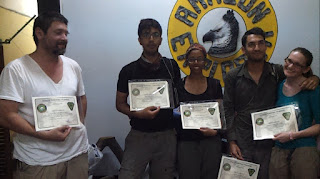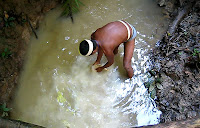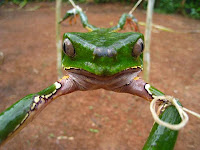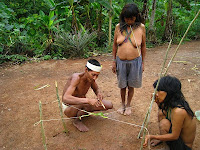 Del 18 al 22 de diciembre de 2012, Amazon Explorer estará organizando el curso de supervivencia en selva para todas aquellas personas o viajeros que quieran adquirir conocimientos básicos o avanzados de la supervivencia en la selva o busquen retos físicos.
Del 18 al 22 de diciembre de 2012, Amazon Explorer estará organizando el curso de supervivencia en selva para todas aquellas personas o viajeros que quieran adquirir conocimientos básicos o avanzados de la supervivencia en la selva o busquen retos físicos.El Curso Básico de Supervivencia en Selva será dictado del 18 al 20 de diciembre y los que cuenten con el tiempo necesario, podrán continuar con el entrenamiento con el Curso Avanzado que se extenderá hasta el día 22.
Los cursos son dictados por instructores militares calificados y contienen aspectos relativos a la supervivencia en la selva, indicando la manera más práctica de adaptarse al medio ambiente y al uso de los recursos naturales.
Se dividen en 2 fases: Teórica, dictada en un salón de la ciudad de Iquitos y Práctica, dictada a 60 km (37 mi) de la ciudad de Iquitos.
Durante los cursos se impartirán temas como fundamentos de supervivencia en la selva y características de la región amazónica, especímenes nocivos, seguridad, señas, orientación, herramientas, fuego, refugio, alimentación, entre otros.
Al término de cada curso cada participante recibirá un Certificado firmado por la Gerencia y el Instructor principal de Amazon Explorer.
Iquitos, ciudad 420,000 habitantes emplazada a orillas del río Amazonas, en el extremo nororiental del Perú (América del Sur), es la principal ciudad amazónica del país. Iquitos posee los servicios de toda gran ciudad como cajeros automáticos, bancos, supermercados, restaurantes de comida vegetariana, peruana o internacional; un hotel de 5 estrellas, varios hoteles de 3 y 2 estrellas, así como alojamientos económicos y dormitorios compartidos para todo tipo de viajero.
Existen tres aerolíneas que cubren diariamente la ruta Lima-Iquitos:
• Peruvian Airlines (www.peruvianairlines.pe)
• Star Perú (www.starperu.com)
• Lan Perú (www.lan.com)
Asimismo, dos veces por semana se disponen de vuelos Panamá-Iquitos:
• Copa Airlines (www.copaair.com)
Para los que viven fuera del Perú y quieren un vuelo directo a la Amazonía peruana, Copa Airlines se presenta como una opción ideal pues gracias a su alianza con United Airlines y su membresía en Star Alliance, la principal alianza de aerolíneas del mundo, posee conexiones desde EE.UU. (New York, Miami, Orlando, Las Vegas, Los Angeles, Newark y Washington), Canadá, México, Costa Rica, Colombia, América Central y el Caribe.
Curso Básico (3 días):
Inicio: 18 de diciembre.
Final: 20 de diciembre.
Curso Avanzado (5 días):
Inicio: 18 de diciembre.
Final: 22 de diciembre.
Contáctese con nuestros asesores a: info@amazonexplorer.com
More information: info@amazonexplorer.com

.jpg)
.jpg)
.jpg)
.jpg)











